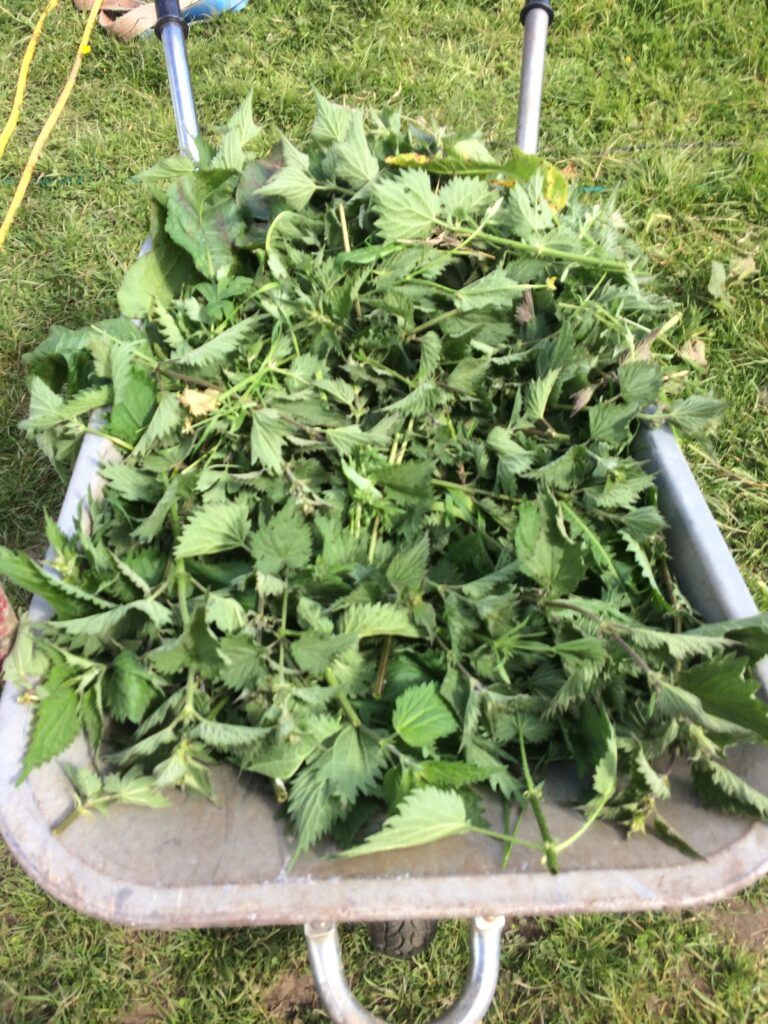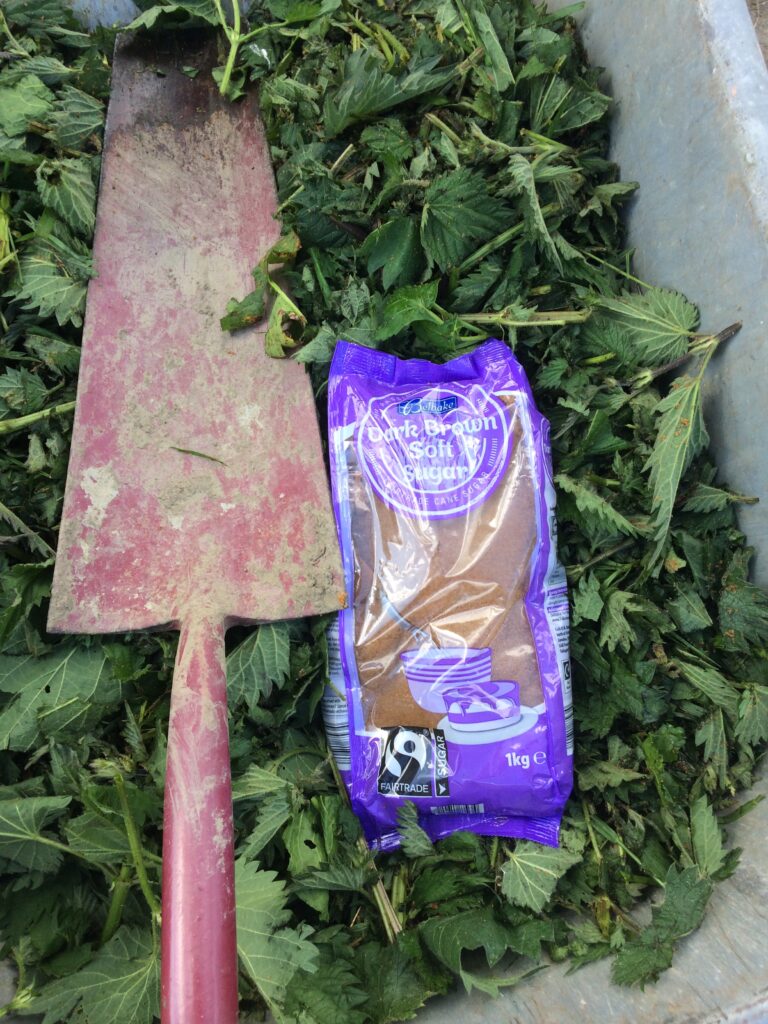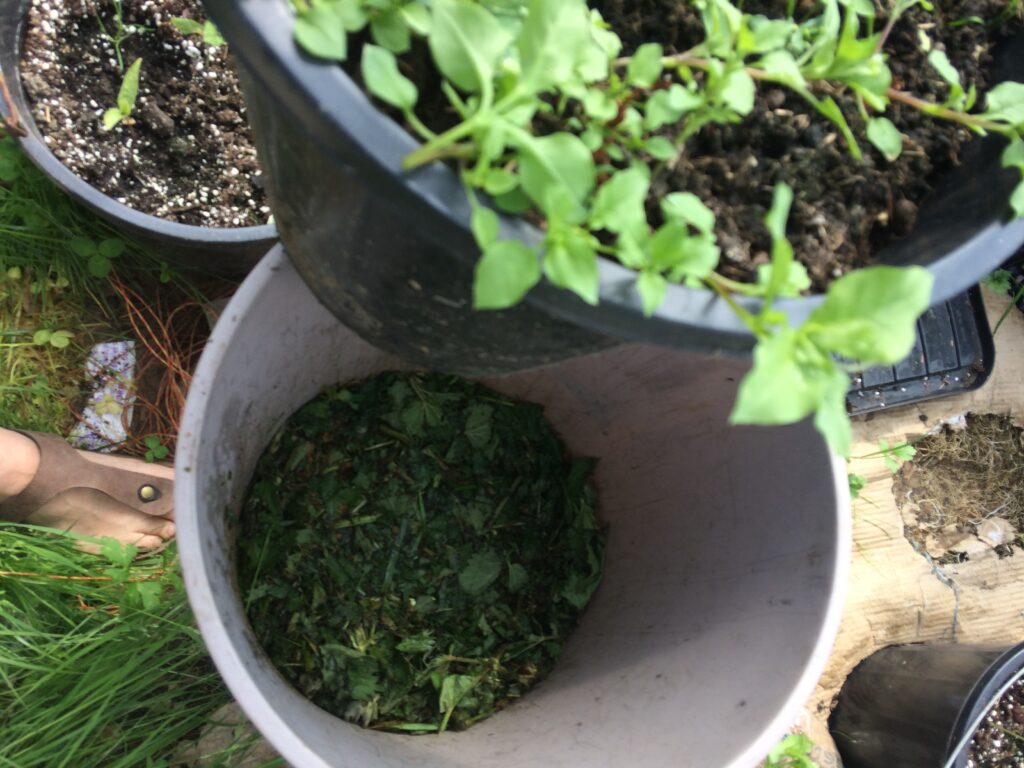Nettle Fermented Plant Juice (FPJ)
The only word I can think of to describe nettle tea, where nettles are added to water and left for weeks, is latrine. This FPJ on the other hand smells like molasses and sweet ferment. They both do the same job. about a ‘house measure’ of black syrup is added to a watering can, and leafy plants are watered this nitrogen rich feed. They literally take off.
The process is simple. Collect nettles and doc leaves, using as much protection as possible. Welding gauntlets are advised as is a long sleeved shirt and wellies. When the barrow is full, use a sharp spade and much like the Zulu women of old who pounded maize in a mortar and pestle, cut up the nettles and dock leaves. It does not require huge amounts of force or you’ll probably damage the wheel barrow. After about five minutes, when it’s starting to look chopped up, add the brown sugar, I added 2kg, about 4 lbs. Mix and chop and change the orientation of the blade from time to time. After another five minutes it’s going to look bruised, dark green and the sugar will be well mixed in.
Add it to a 5 gallon bucket and gently compress it with the spade. Those buckets split in a heartbeat. Use an ordinary bucket filled with soil or rocks to weight everything down. Give it a mix every a few times over the next two weeks.
You will have a delicious, effective, organic nitrogen feed that cost £3.10 (sugar from Lidl) and you know what has gone into it. I’d not worry about shelf life because you’ll use it up pretty quickly.

Before 
During 
After

What about a juice blender in the kitchen i tried this as experiment with comfrey leaves the and put in a jar after adding brown sugar . it does not smell .at all . For Nitrogen I believe nettles are better f.. has anyone tried this and how long
Hi, yes, this would work but I’ve not tried it with a juicer/blender and you’re right it does not smell. My usual method fill a barrow, use a spade to chop it up, mix in sugar and then fill a bucket and leave it to ferment. The collection of plantless syrup is messy and easy. This year comfrey is abundant, so have made a couple of pints of it and the plants are responding well